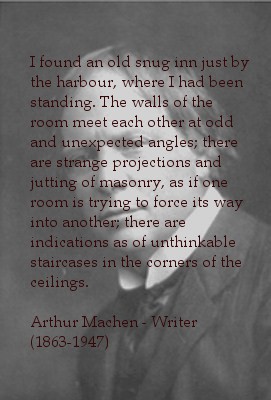The Cleveland dyke is an intrusion of dark, hard rock which runs in a more or less straight line from the valley of the Tees near Eaglescliffe station for 31 miles as far as Fylingdales Moor near Robin Hood's Bay. The dyke consists of whinstone, an igneous rocks formed by the solidification of molten material. It supposedly gets its name from the sound it makes when hit by a hammer.
The dyke has been dated to 26 million years old, meaning it was formed in the Miocene period geologically speaking. Whinstone has been mined near Beck Hole since the early 1800s. Its usage was mainly as roadstone, although some was also utilised for building work. The dyke is between 30 to 40 feet wide, extremely deep and bounded by about 3 to 6 feet of metamorphosed sedimentary rocks, in this case sandstone transformed by heat into what the miners called 'China rock' because of its white appearance.
Driving along toward Beck Hole from the Goathland turn off of the A169, the huge scar of the whinstone quarries in the dyke can be seen to the right of the road. Hidden away to the left in the heather is a small, ruined building and beside it is a tunnel. This is the entrance to an adit which leads 1770 feet and meets the dyke deep beneath the moors, at which point the mine workings are around 140 feet below the quarry floor. The mine was known as Sil
Howe.
 |
| The entrance to the adit, dated 1940 |
_25497.jpg) |
| The crushing plant above Goathland station |
 |
| The miner's motto 'LEAD THOU ME ON' |
 |
| The ruined mine offices and the bomb crater |
The photograph below shows the mine in 1920. You can just pick out three miners and the railway track coming out of the tunnel. It gives some idea of scale.
The source for most of this article was Peter Wainright's excellent booklet The Mines and Miners of Goathland, Beckhole and Greenend. Peter goes into details of mine ownership, the fates of individual miners and anecdotes and newspaper reports concerning Sil Howe. It can be purchased from Whitby Bookshop.






